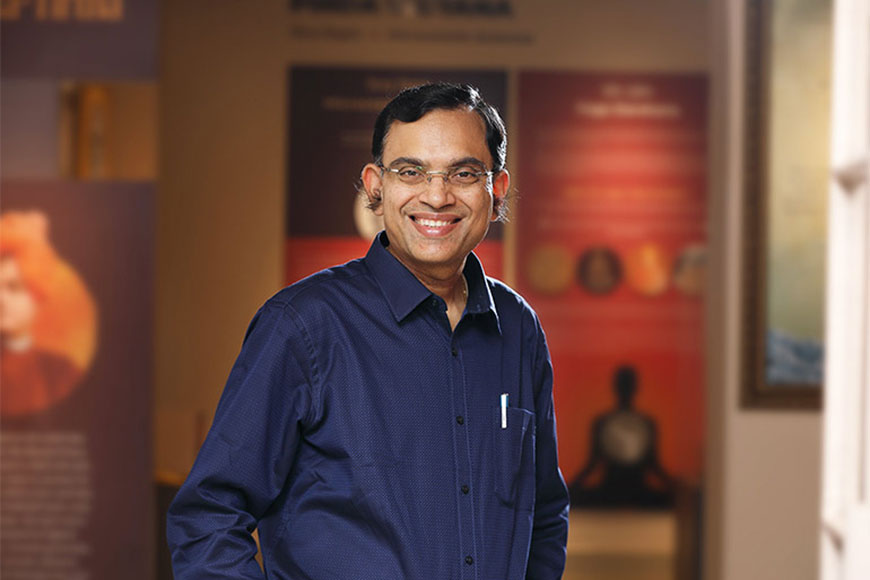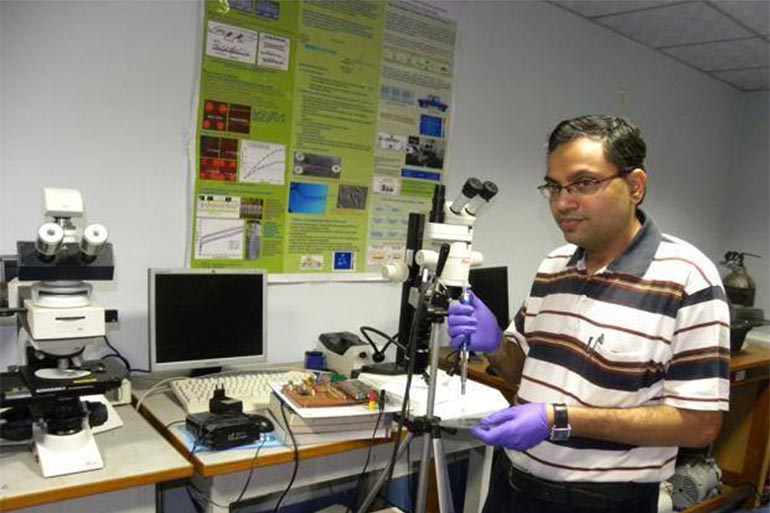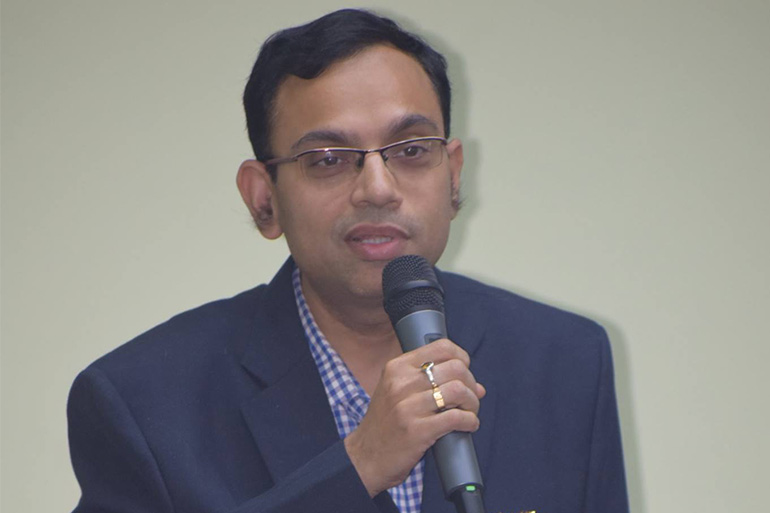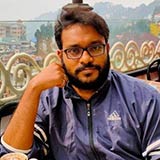Bengali professor-researcher acclaimed as the best researcher in India as per D-Index

Dr. Suman Chakraborty, Professor of the Mechanical Engineering department at IIT, Kharagpur, and Professor J.C. Bose National Fellow Recipient, is a former recipient of the Dr. Shanti Swarup Bhatnagar Award, India's highest civilian honour in the field of science and the prestigious Infosys Award. And now, according to the D-Index of the international organization, Research.com, he has been named the best researcher in India. An alumnus of St. Lawrence School, Kolkata, Dr. Chakraborty did his BE in Mechanical Engineering from Jadavpur University and then went to IISc, Bangalore for his ME and Ph.D. He moved to Germany and then to the US for post-Doctorate research. His primary topics of research were fluid dynamics and thermo-kinematic phenomena such as thermodynamics, heat transfer, etc.
In an exclusive interview with GetBengal.com, Dr. Chakraborty said, "The problems of modern science cannot be solved in a linear way, resorting to the same kind of scientific approach. You have to rather approach a certain problem from various perspectives/aspects of science. Two of the most important fields which are needed to examine and explain a scientific problem are the Science of Nano-materials and Nano-particles (which includes light-matter interaction among other phenomena) and Data Science (which includes a collection of data) and analyzing those.”

He explained this view while illustrating the point from his own field of experiment. "One of my most important tasks is the Rapid Antigen Test. In this test, the virus or infectious sample placed on the paper or plate in the middle of the test kit is carried through capillary action. This means that you do not have to take the help of any other pump-like device in this kind of flow. The other section of that same kit contains similar antigens or antibodies. If these two substances combine through a nanoparticle, a light signal of certain wavelengths is created. One specific feature of such a signal is 'surface plasmon resonance'. That signal is collected and analyzed through fluorescent or lateral detectors. From that analysis, one can conclude whether the virus is in the sample or not. Here we can see the application of nanoparticles for experimentation process and collecting and analyzing the data which comes under data science.&rdquo
Research.com is a renowned international portal for scientists. It features an impressive list of the best scientists ranked by their D-index and number of citations which are compiled from various bibliometric data sources. The ranking of top scientists (launched initially in 2014) is based on their Discipline H-index (D-index), the proportion of their contributions made within a given discipline as well as the awards and achievements of a scientist in specific areas. The D-index threshold ensures that the top 1% of leading scientists are considered in the ranking among all scholars and researchers belonging to the discipline. Last year, Dr. Chakraborty was awarded the Infosys Prize 2022 in Engineering and Computer Science for his pioneering work in elucidating the interaction of fluid mechanics, interfacial phenomena, and electromechanics at the micro and nanoscale, which is, in a lucid term, may be explained as 'Application of Technology for Affordable Healthcare'.
The high costs of medical care are a major global problem. Rising healthcare spending forces painful tradeoffs within household budgets, but also in state and federal budgets. Over the years, the disease burden of communicable and non-communicable diseases among developing countries has been on the rise. Traditionally associated with developed countries, developing countries have seen an unprecedented increase in the past years in non-communicable diseases such as diabetes, cardiovascular diseases, and obesity. Dr. Chakraborty says, “Diabetes can damage vital organs like the heart, kidneys, and eyes. Or facial cancer, which goes undetected in the early stage, but once these diseases spread, it becomes difficult to save the patient, or the cost of treatment skyrockets. Financial affordability of healthcare is one of the major barriers to healthcare-seeking in resource constraint countries. Another factor that deters poor people is the prohibitive cost and access to essential life-saving drugs. This also extends to vaccines for otherwise fatal diseases.”
Dr. Chakraborty further adds, “Anemia is an important public health concern, affecting almost 25% of the global population. In India, these statistics are even more worrisome with more than half of the children, non-pregnant and pregnant women being affected by the disease, especially in the rural areas. Though the major cause of anemia is iron deficiency, other causes cannot be neglected considering the magnitude of the problem. The main purpose of our research is to provide early detection and early support to cure diseases. The technologies we have discovered are now being used by many companies to develop new diagnostic devices. Our team's mission is to fabricate technological apparatus based on the laws of physics and then spread them in rural areas where there are no diagnostic or first aid facilities, collect information through machines and analyze them through data science and build affordable medical infrastructure in those areas through digital health centers and telemedicine services.”
Artificial intelligence (AI) is now the most widely discussed topic around the world. When Dr. Chakraborty was asked to express his opinion about the new craze, he said, “There is a general misconception that artificial intelligence will have solutions for all problems but that is obviously not possible. That’s because AI works on algorithms. It takes a lot of test data to build an algorithm. The main challenge in developing this algorithm is that if something actually happens that is outside of those test data, AI cannot solve it. Besides, we have enough and more manpower in our country, so there is really no need to rely entirely on AI. Instead, AI and human efficiency can be combined to create a system that will be unbeatable in every way." He gives examples of this blended form thus: “Let's say, someone is driving on a crowded street. But he's not very confident with the steering wheel but if there is an automatic system in the car which will help the driver on the crowded road, then the driver's job becomes much easier.

In addition, AI can be used most effectively in the medical profession. In our country, we have an acute shortage of medical practitioners and hence, it is not always possible or feasible for doctors to allot more time to each patient. But in order to treat a patient properly, the doctor needs to know the patient's medical history to find out about the relevant chronic illnesses and other prior disease states for which the patient may not be under treatment but may have had lasting effects on the patient's health. If all this information can be handed over to the doctor through an automated system, then it becomes convenient for the physician to decide on the line of treatment to dispense with.” Dr. Chakraborty insists that fair and effective use of artificial intelligence will open up new opportunities in all spheres.
Dr. Chakraborty has been announced as India's best researcher in the D-index under Research.com. Therefore, it is imperative to know his advice to young researchers of Bengal and India, who want to follow in his footsteps. Acknowledging all the challenges in the research, Dr. Chakraborty says, "Research is a process of systematic inquiry that entails collection of data; documentation of critical information; and analysis and interpretation of that data/information, in accordance with suitable methodologies set by specific professional fields and academic disciplines. You invent questions and seek the answer yourself. There is challenge and joy in discovering new knowledge. A curious mind and an ability to look at things from different perspectives are what make a good researcher better. Good researchers are observant about the world around them and open to new ideas and possibilities; they are always asking questions and looking for answers. So, those who have the will and courage to face those challenges should join research work.”











